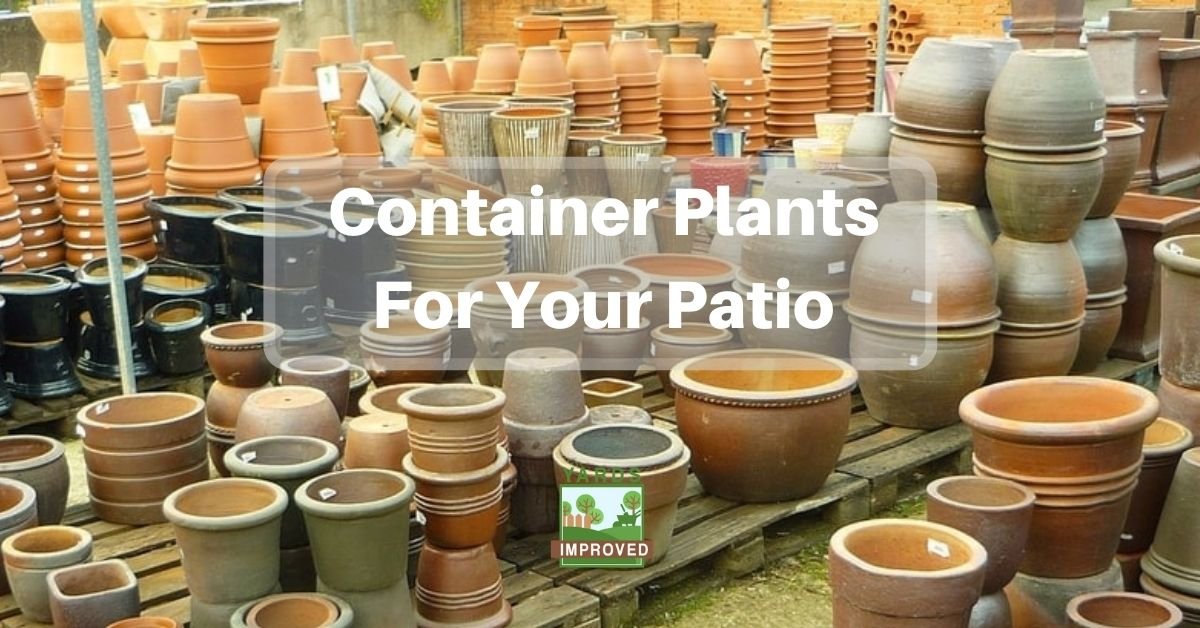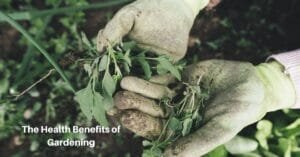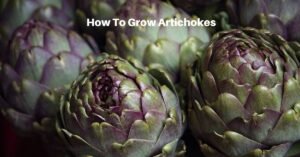Your gardening doesn’t have to be limited to the ground. Instead, you can use a wide variety of containers. Container gardening allows you to have more versatility regarding where you keep plants. The containers themselves even serve as part of the decoration!
Containers can stand on the ground or a table. They can even be placed on shelves on your fence. Sizes can run the gamut, too, from small pots that you can easily pick up and move to large pieces that you’ll want to keep in one place.
There are a huge number of options when you add container gardening to your yard! There are also some things to keep in mind. Let’s have a look at those as well as some of the best plants to grow in containers.
Which Comes First – The Container Or The Plant?
When you are thinking about container gardening, it’s important to keep both the container and the plant in mind at the same time. Of course, you may have a plant that needs a new home. Or you may find that perfect container or even decide to recycle other materials to make one.
However, not just any plant will thrive in any container. Choosing the plants you want and the type of container have to go hand-in-hand. The container will form a huge part of the plant’s ecosystem so the two have to work well together.
What To Look For In A Container
There are several qualities to look for when choosing a container.
The most important consideration is the size. Consider where you’re going to use it first. If you want it to stand directly on your patio, it should be large enough to be noticeable. However, if it is going on a shelf or table, you have to think about how it will look. And you’ll also want to consider how much it will weigh with the soil added as well as how much the plant will spread out in it.
Drainage is another element to consider. Again, this is closely tied to what type of plant you’ll have since they have their particular preferences. But it’s a key consideration. Some pots have drainage holes while others will hold the water until it’s used by the plant or it evaporates.
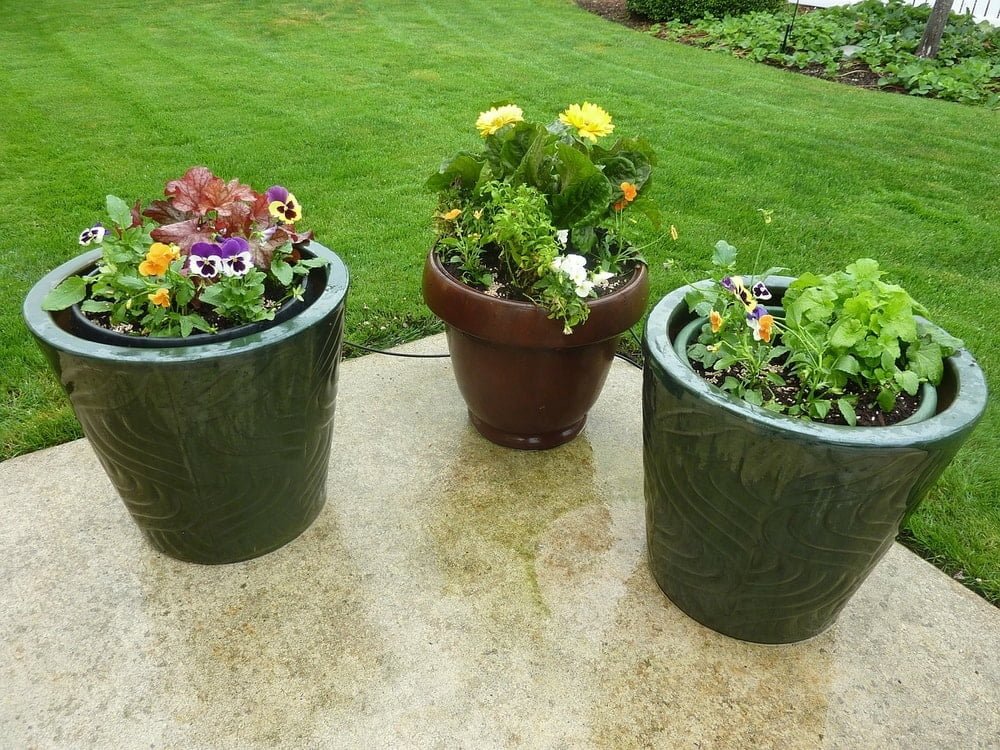
Durability and balance are also important. Your container has to stand up to the elements. While smaller containers might be moved inside during the colder months, they’ll still face the sun, wind, and rain the rest of the year. The material should be suitable for that. The container as a whole, when filled with soil and your plants, should also have a stable base so it won’t tip over easily.
Of course, it’s also got to be about the appearance! There are many styles available. What do you want to look at in your yard? Most likely, it’s not cheap plastic pots. Plastic may be ok – at least this is something you’re not going to use for 15 minutes and then throw away. But it should have a nice finish with a pleasing design. The same is true if it’s metal, wooden, or whatever other material you choose. Of course, the rustic or recycled look can be great. But it can still be done with class.
Read more about the pros and cons of different planting container materials
Arranging Containers
Of course, you also have to decide where you want to place your containers. And that leaves – your whole outdoors!
You do have to take into account factors like how much sun the plants need. And of course, you don’t want the containers to interfere with your movement throughout the yard. However, that leaves a huge range of possibilities.
Perhaps you’d like to mark out the corner of your patio with large planters that hold bushy plants. Anything from about a foot high and a foot across would look great in this context. Even something taller would be great. Don’t make it too high, of course, because you’ll still have to care for the plants inside!
Window boxes could hang under your windows, of course, but they could also be attached to the fence. They can help to add a sense of life and color to an otherwise boring surface.
Get tips on when to plant outdoor flowers and ornamental plants
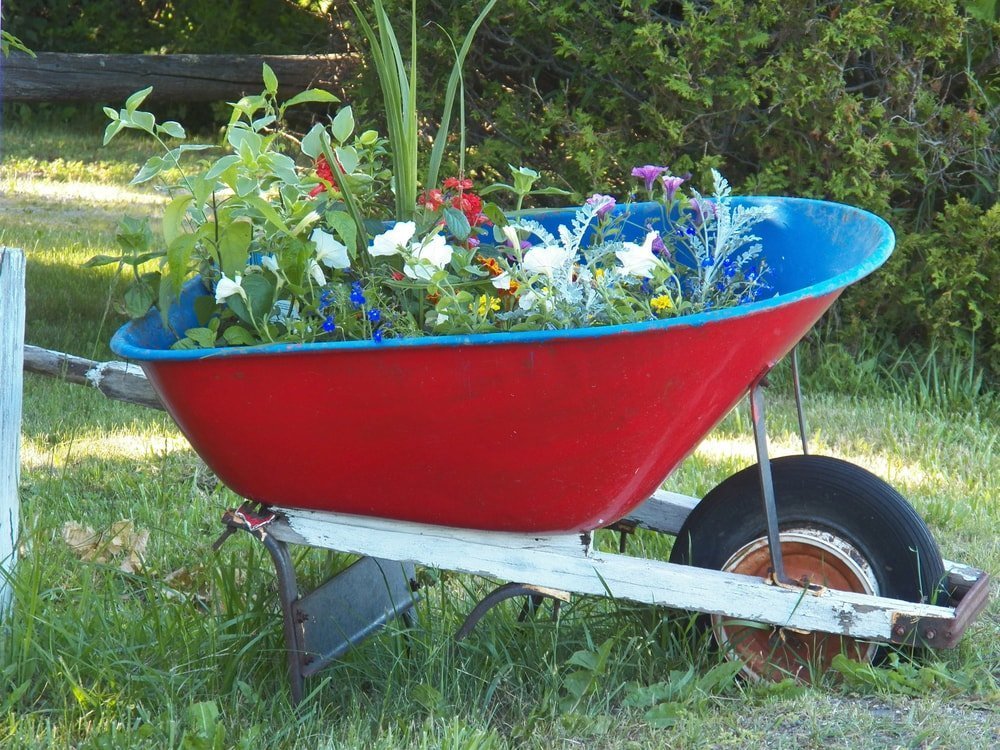
You could also have pots on your steps and landing. The size should depend on how wide and deep your steps are. Be sure to place them where they won’t be a tripping hazard!
Another option is hanging planters. These could hang from the pergola or the edge of your porch roof. You do want them in easy reach so you can water and care for the plants, of course. At the same time, you want them where no one will bang their heads on them. But they can help add a touch of color to an otherwise empty space.
All of these call for some artistic choices, but you could even go a step further and create a focal point. For instance, an old ladder could have larger containers around its base and smaller ones on the steps. Or you could take a beat-up wheelbarrow and make it the container! Pallet wood can be repurposed as plant containers. Even used car tires, after a little TLC, can work.
Find more tips for decorating your patio!
What To Look For In A Patio Container Plant
Of course, you also have to choose plants that will work well in your space. There are many alternatives. They run the span from flowers to evergreens. So a large part of the choice is up to your taste.
Still, there are some things to keep in mind. For instance, do you want a plant that will stay in a container always, or do you plan to transplant it to the ground at the end of the season? Chrysanthemums, for instance, look great and do well in pots through the fall, but usually thrive when transplanted before winter.
You also have to keep the hardiness of the plant in mind. You can’t depend simply on the hardiness zones in this case, at least not directly. Your potted plants are more vulnerable to the climate since their space is more limited. The soil in your container will heat and cool much faster than the ground will. A general rule of thumb is that you should subtract two from your hardiness zone when dealing with potted plants. So if you live in Zone 7, your potted plants should be hardy enough for Zone 5.
The shape and size of the plant is another key factor. Always keep in mind that the plant is going to grow – what you buy isn’t usually the final product. Also, think about the form it will take. Is it tall but slender? Shorter but bushier? That will help determine the general shape of the container you want to use for it as well as where you want to place it.
Along with the size of the plant above the ground, you also should think about the root system. Will your container allow enough room for the roots to thrive? Do the roots need a lot of depth or a lot of width?
Some Of The Best Patio Container Plants
As we mentioned, there is a huge variety of great container plants available. It’d be impossible to list them all. But here are some favorites that you might find make a great fit for your yard.
Elephant Ear (colocasia)
Elephant Ear is native to swamps, so it thrives in warmer climates with high humidity. Zones 8 – 11 are the ideal habitat.
If you have a pond, waterfall, or other outdoor water feature, it can look right at home!
The leaves range from green to dark purple; some even have a green and white mix. These grow large, too, reaching 3 to 5 feet in height.
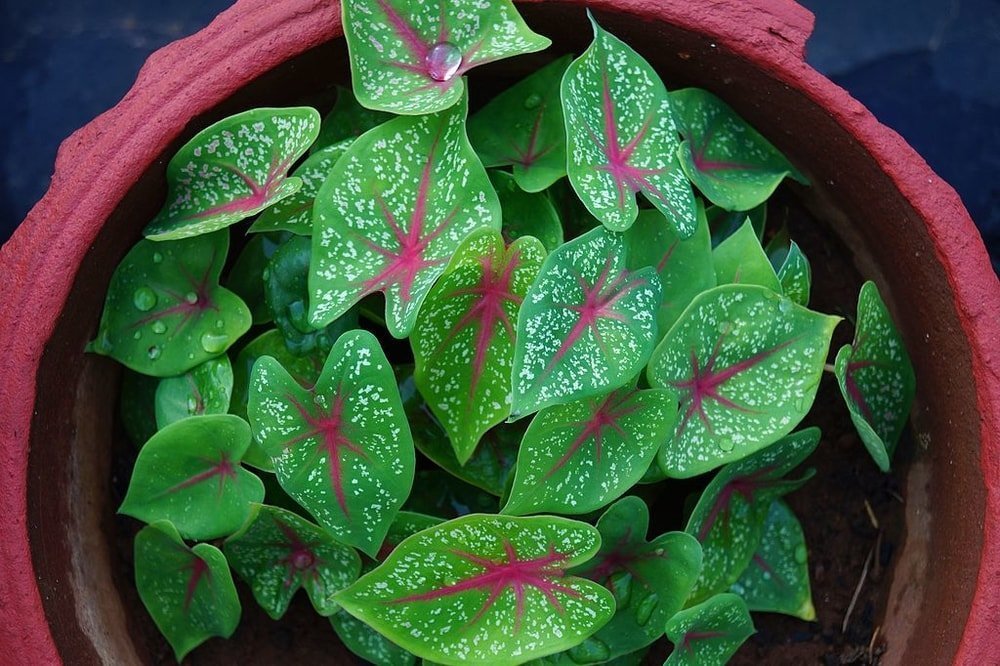
They do need good drainage to avoid root rot. They should be fertilized twice a week as well.
Geraniums
For something smaller and a different color entirely, geraniums can go great. There are a wide variety of subspecies, though, and some grow rather tall. Be sure to talk it over with someone at your garden center so you know what you’re getting.
There is a wide variety of colors available, from red to purple to white and all shades in between.
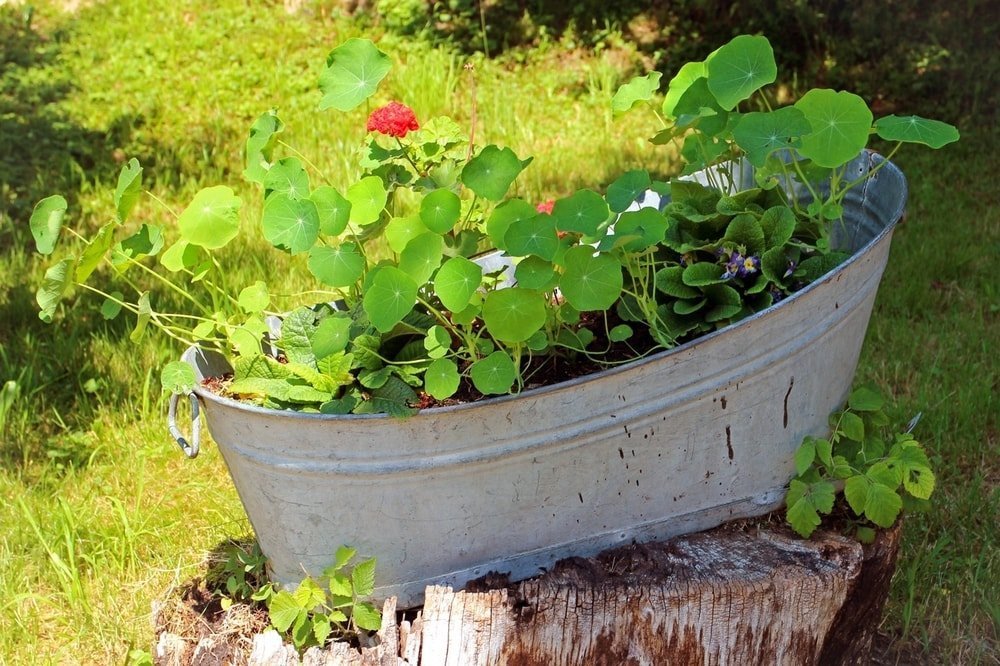
You should repot them each year using fresh topsoil. Good topsoil is usually enough to keep them healthy through the year; they’ll need a minimum of additional fertilization. As you repot them, it’s also easy to divide plants for new planters.
They do need good drainage. It’s also important to trim off dead flowers and wilting leaves. These should be removed from the container; leaving them on the soil can increase the possibility of rot.
Cactus
Unless you live in a cool, dry area, odds are you’ll struggle mightily to grow cactus in the ground. However, you can still enjoy them in outdoor containers as long as you have hot or mild summers.
There are many varieties of cacti available and they require little care. Of course, you’ll want the right kind of soil; most garden shops sell cactus soil as a separate product.
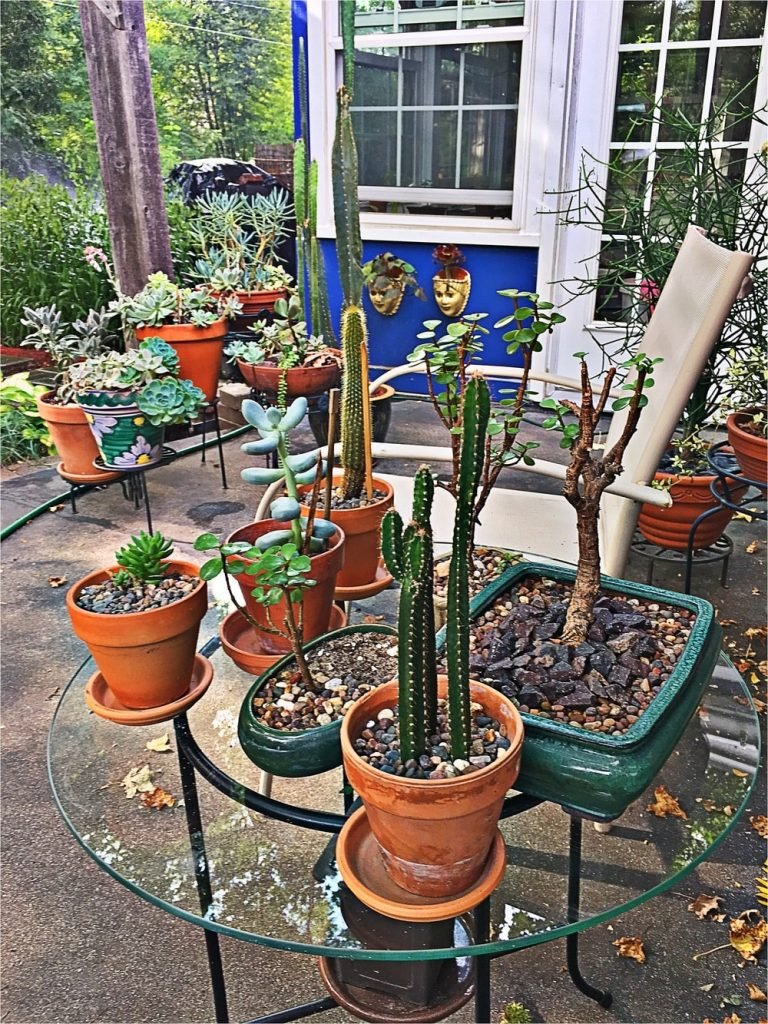
These plants do have to be moved inside during cold weather. They also need great drainage.
Cactus can thrive outdoors for at least part of the year in most regions of the US and southern Canada. But if you live in a hot and dry location, they are ideal because of their resista nce to heat and low demand for water.
Boxwood
If you’d like an evergreen that has a great size and shape, the boxwood could be what you’re looking for.
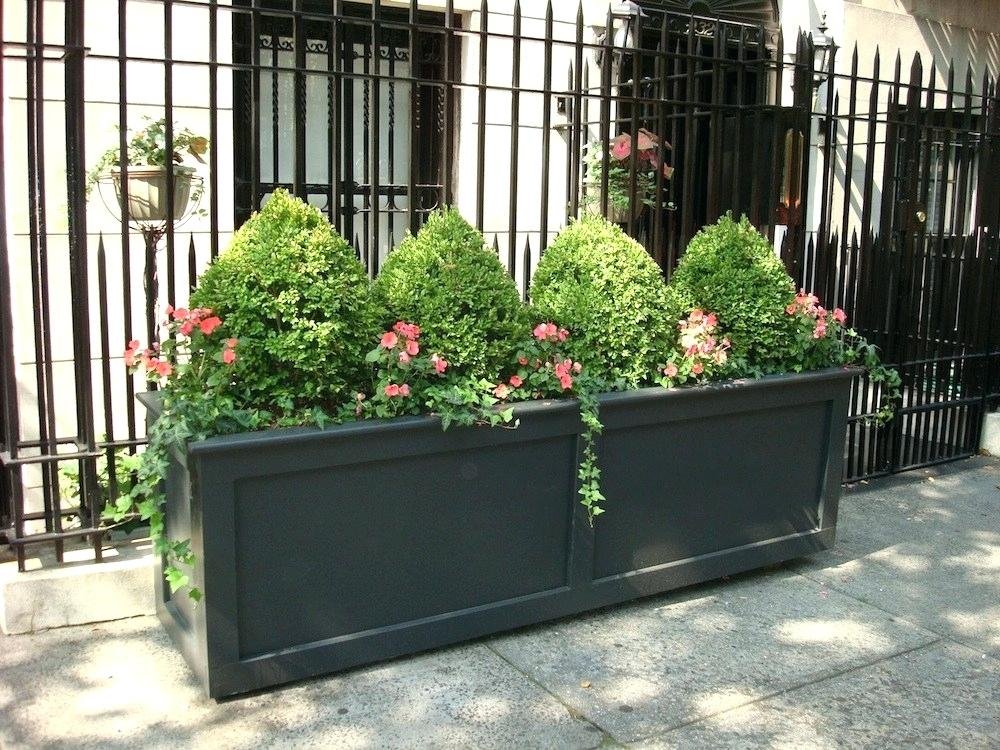
If given space, this shrub will grow up to 5 feet tall. However, its growth is somewhat controlled by the space for its root system. So in a container, it will stay smaller while still being healthy.
It’s most suited for zones 4 – 9. It should be kept in a partially shaded area, and you should try to rotate it occasionally so all sides get some sun.
Golden Sword Yucca
This yucca plant is hardy enough to survive in freezing temperatures and makes a great addition as a light-green “filler” beside flowering plants. It’s a succulent so it can hold up during dry spells.
It grows up but then spills over, creating a full look. It enjoys full sun and good drainage.
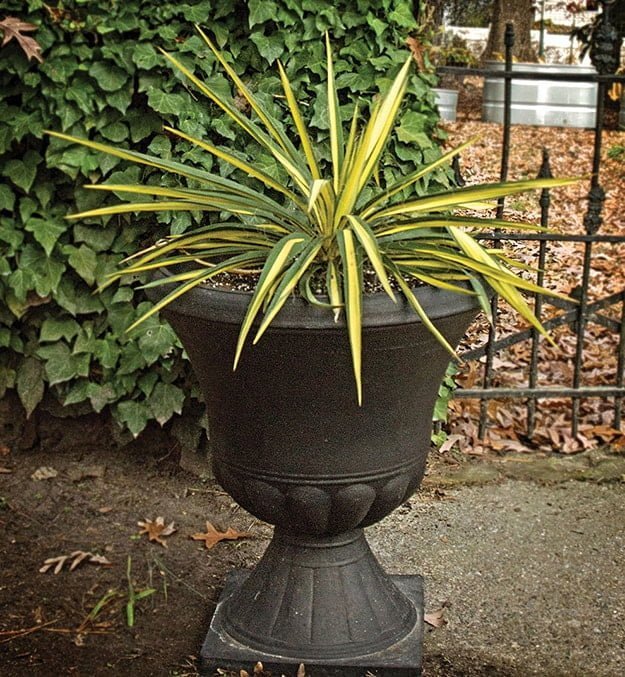
Given space, a single plant can grow 3 feet wide and two feet tall. However, the size of your container may keep it in check. It produces bell-shaped flowers in summer on a spike that grows among the leaves.
Conclusion
Container plants are a great addition or alternative to other types of gardening. Both the plant and the container itself can form beautiful parts of your outdoor decor. The two go together to help create a beautiful element in your yard. No matter your climate or your available space, adding some plants in containers can help improve the looks of your patio and yard!

